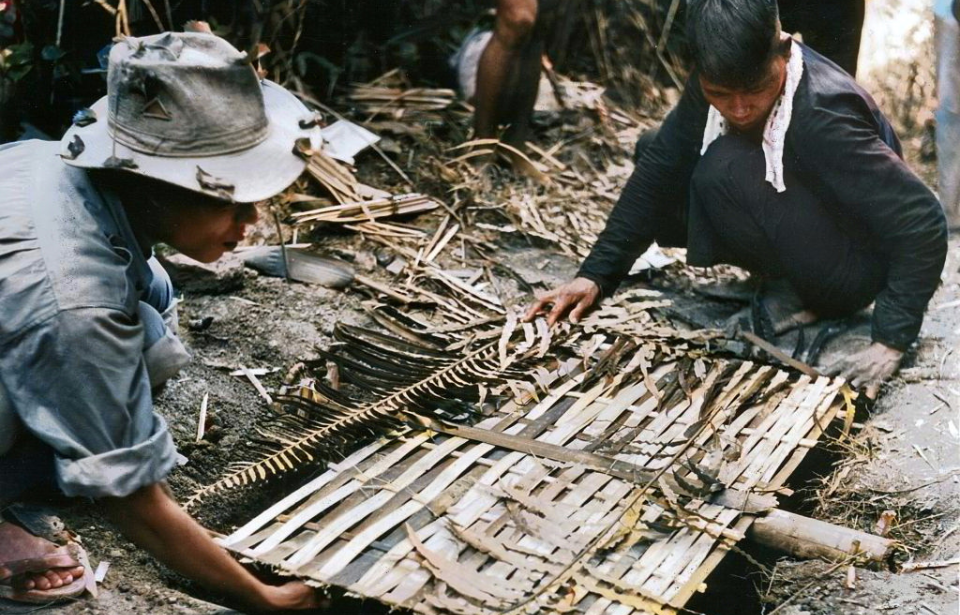The Vietnam War is often remembered for the guerrilla tactics that caught American forces off guard. The Viet Cong, using their deep knowledge of the land, took full advantage of it—especially by using booby traps that were cheap but highly effective. Many of these traps were made from bamboo, a material that couldn’t be picked up by the U.S. military’s standard mine detectors.
These traps were often meant to wound rather than kill. Injuring a soldier forced their unit to stop and give medical help, slowing them down and using up their resources. To make things worse, the Viet Cong often set up secondary traps aimed at those rushing in to help the wounded. Reports alleged that from 1965 to 1970, booby traps and mines caused 11% of U.S. combat deaths and 17% of injuries. In 1965 alone, about 70% of injuries were linked to these hidden devices.
Beyond the physical harm, the mental toll was heavy. On top of facing the harsh, unforgiving jungle, American soldiers had to stay constantly on guard for hidden dangers. This constant fear wore down morale and added to the emotional stress of an already brutal war.
Bow trap
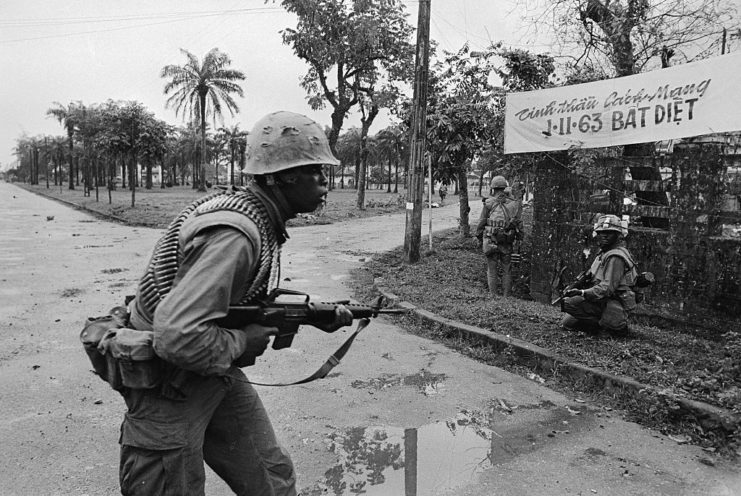
The bow trap was a simple but effective weapon used by the Viet Cong in the early stages of the Vietnam War. A bow was stretched and ready to shoot, then connected to a tripwire. When an American soldier triggered it, the bow went off right where they were standing, hitting them in the chest.
In some cases, the guerrillas set up this trap in a small pit. Here, the bow was tilted upward, causing the arrow to hit the soldier in the legs instead.
Punji sticks
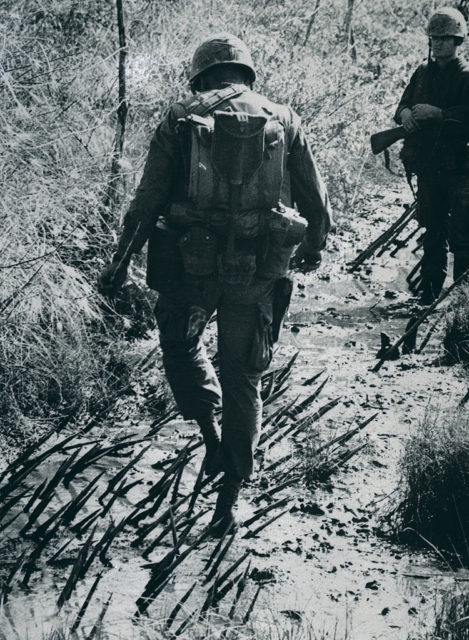
Punji sticks, also known as punji stakes, were a common booby trap deployed by the Viet Cong. The sharpened bamboo, wooden and sometimes metal stakes were often coated in feces or urine, with the goal of causing an infection in their victim. They could also be coated with poisonous substances from animals and plants.
Punji sticks were placed pointing upright at the bottom of a hole, before being covered with material that would camouflage them. When a US soldier broke through the flimsy cover over the hole, they would step on the spikes at the bottom and suffer injuries to their feet and legs.
This particular booby trap could be made worse in two different ways. The first was installing them at a downward angle, along the sides of the hole. When these extra stakes were added, it became difficult for the victim to get themselves out without causing further injury to themselves. This often resulted in the slowing down of their unit while efforts were made to free them.
A second way was by digging another hole next to the one equipped with the punji sticks, with the aim being to trap a second combatant with little additional effort. When a soldier came to rescue his injured comrade, he’d fall into the adjacent hole and become trapped.
Along with physically injuring American troops, punji sticks were also effective at hurting the overall morale of those serving within Vietnam’s dense jungles.
Bamboo whip
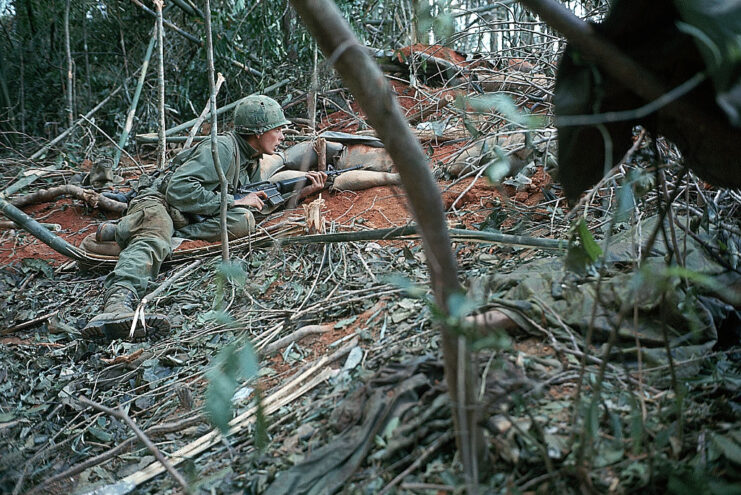
Bamboo whips were another cruel booby trap used by the Viet Cong. A bamboo pole, pulled back under high tension, was connected to a tripwire. The pole was outfitted with foot-long spikes, and when the tripwire was triggered, it would snap forward, impaling the person who set it off.
As reported by We Are The Mighty, the pole and its spikes could reach speeds of up to 100 MPH. Similar to punji sticks, the spikes could be coated with toxic substances to weaken the victim’s ability to recover.
Swinging mace
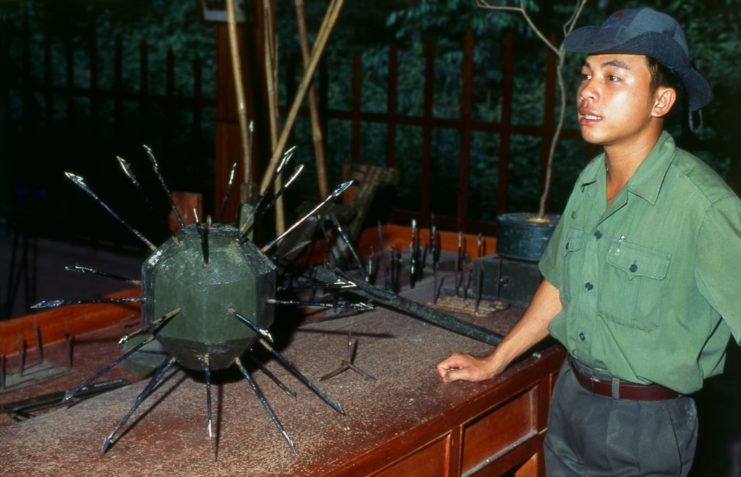
The swinging mace worked similarly to the bamboo whip, but instead of being attached to a stick, it was a 24-inch ball with spikes made of clay, wood, or metal. It was set off by a tripwire and usually weighed more than 40 pounds.
This was one of the Viet Cong’s more brutal traps. When the hidden ball was triggered, it used gravity to swing down from a tree, striking a soldier’s upper body with deadly force—especially the head and chest.
Tiger trap
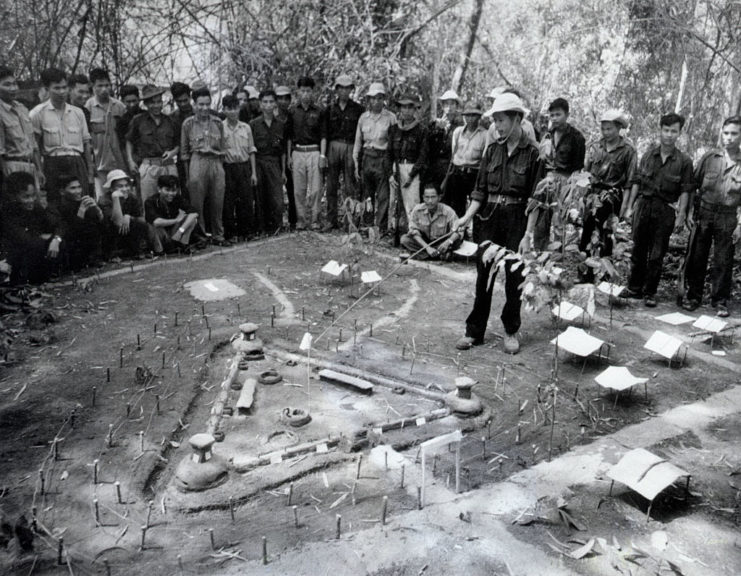
The tiger trap was another Viet Cong booby trap that, like the swinging mace, caused significant injury to a soldier’s upper body. The trap was sprung when the intended victim triggered a tripwire, causing a wooden plank imbued with metal spikes to fall on them.
This was made all the more brutal by the addition of weighted bricks or other objects on the board.
Snake pit
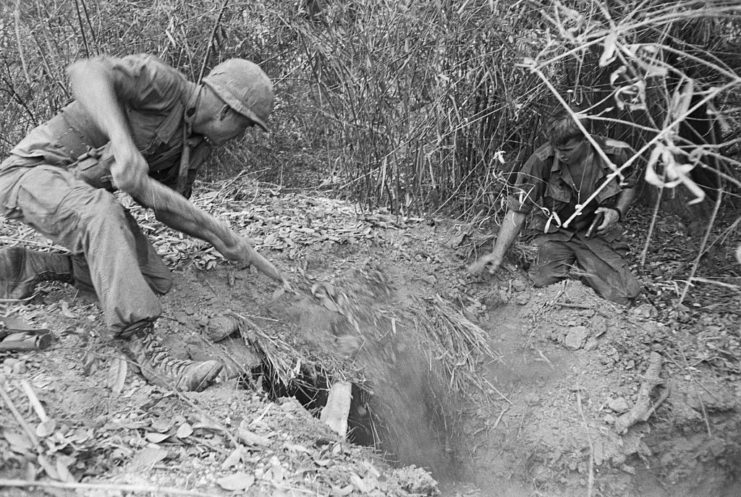
Snake pits were primarily used within the Viet Cong’s tunnel systems.
A poisonous snake would be attached to a piece of bamboo, and when released on the victim would place the reptile in the perfect location to attack. Snake pits were encountered by American “tunnel rats,” but the Viet Cong would put snakes in other locations, too, such as in their bags or in old weapons caches.
Bamboo pit vipers were a common snake used by the Viet Cong. Within a few minutes of being bitten, the flesh surrounding the bite turned necrotic, swollen and extremely painful. However, the Malayan krait was the most infamous, earning the nickname, the “two-step snake,” sometimes mischaracterized as the “three-step snake.” This is rooted in a myth that a soldier bitten by one was killed in the short time it took him to move two steps.
Cartridge trap
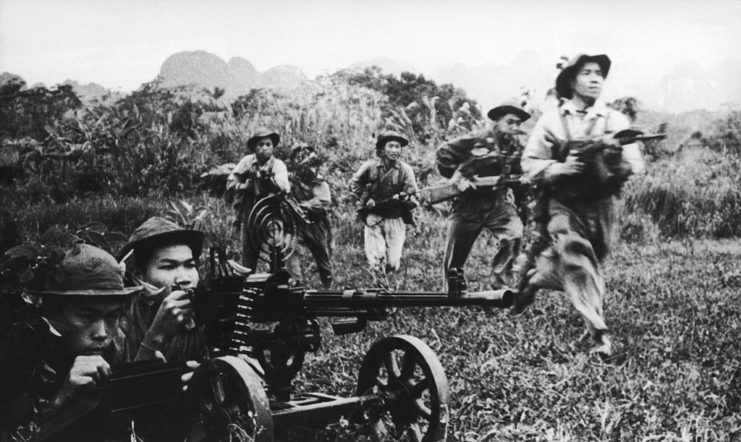
Cartridge traps worked much like punji sticks, hidden in holes in the ground. A live bullet was placed inside a bamboo tube, with a nail and wooden board underneath acting as a homemade firing pin. The trap was then covered with camouflage to keep it hidden from enemy soldiers.
When a soldier stepped on the trap, their weight set it off, firing the bullet straight through their foot. Because of this, the traps were sometimes nicknamed “toe-poppers.” How bad the injury was depended on the size of the bullet—smaller rounds often left soldiers permanently disabled, while larger ones could be fatal.
Grenade-in-a-can
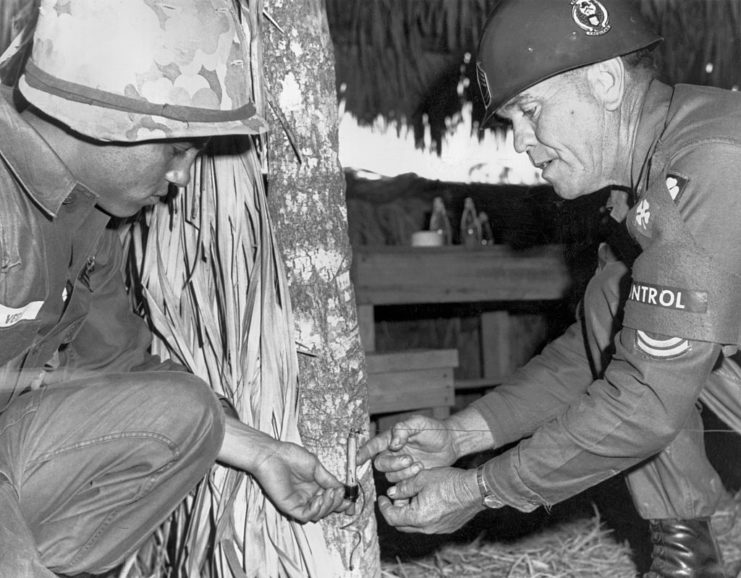
As its name suggests, the “grenade-in-a-can” trap was made by placing a grenade—already armed with the safety pin removed—inside a can, which held down the striker lever. A tripwire was attached to the grenade, and when someone triggered the wire, it pulled the grenade out of the can, releasing the striker and causing it to explode.
This trap could be set up using just one can mounted on a stake, or with two cans placed on opposite sides of a path, usually attached to trees, with a tripwire stretched between them. These deadly devices were often hidden in streams or placed near the entrances to Viet Cong tunnel networks, making them especially dangerous for American and allied troops operating in those areas.
Rigging war trophies
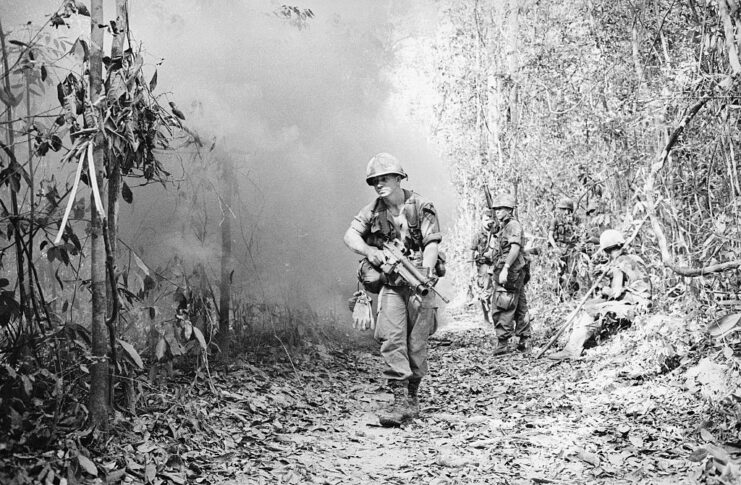
These booby traps were created based on the fact that American troops enjoyed capturing the flags of their enemies. When Viet Cong guerrillas were forced from their bases, they’d rig their flags with explosives, which detonated when the US soldiers took them down.
More from us: Cessna A-37 Dragonfly: The Forgotten Legend of Vietnam
The Viet Cong knew the Americans also enjoyed taking other items as war trophies. As such, they rigged them with similar explosives, so that, if the enemy combatants wanted to take anything from abandoned camps, the explosives would detonate, causing additional casualties.
